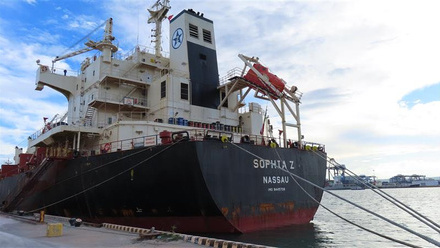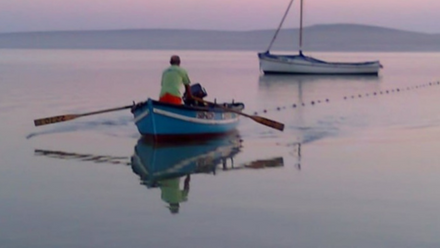Lifeboat accident on RRS Sir David Attenborough: Lessons learned
In 2021, the polar research vessel experienced a lifeboat davit failure in Loch Buie, Isle of Mull, Scotland.
The research vessel RRS David Attenborough became famous, when, thanks to an internet poll gone awry, the vessel was almost dubbed ‘Boaty McBoatface’.
But on 4 March 2021, the ship made the news for a more serious reason when a six-tonne lifeboat plummeted bow-first into the sea with three crewmembers aboard – thankfully, nobody involved suffered a major injury.
What happened
At 11am, in the waters of Loch Buie, Scotland, mild weather conditions set the stage for what was expected to be an unremarkable and routine crew-training exercise. The chief officer gathered eight crew members for a lifeboat drill, consisting of the repeated launch and retrieval of RRS David Attenborough’s 90-person port-side lifeboat, for operational familiarity.
Deploying the lifeboat, the bosun’s mate used his controller to extend the lifeboat’s davit. It operated perfectly, moving it off the deck and into its deployed position. The deck engineer pulled the brake lever, lowering the lifeboat to just above the waterline.
It was here that the crew encountered their first glitch as the winch tasked with pulling up the lifeboat failed to start, prevented by a seized limit switch. With the chief engineer (C/E) and two electro-technical officers (ETOs) arriving on scene to fix the issue, the lifeboat was retrieved, without apparent further incident.
Confident that the day’s mishaps were over, three crewmembers entered the lifeboat and sat in their assigned positions, with the third officer taking the helm, a seaman grade one (SG1) alongside him and the science bosun in the bow. But as preparations were made, the crew missed a crucial detail – the remote-control wire was not fed into the lifeboat.
The third officer stood up, opened the hatch, fed the wire into the lifeboat, and sat back down without refastening his seatbelt. Pulling the remote-control wire to trigger the lifeboat deployment sequence proved useless, until the third officer’s colleague, the SG1, got out of his seat to pull it a second time.
This triggered the incident. As the davit arms began to move, the winch system released the lifeboat falls prematurely, causing the boat to crash to the deck. But catching on the still-extending semicircular davit arm, the lifeboat rolled over until it was on its side, throwing its unbuckled passengers against the wall.
As the forward suspension ring released, the lifeboat veered over the deck edge bow-first; the aft suspension ring ripped off the aft hatch, and the boat plunged into the sea by the head, hurling the SG1 into the lifeboat’s nose. Water flooded into the hole where the hatch had been, submerging the three crew. The SG1 was thrown to the floor of the boat as it righted itself, discharging the seawater.
Causes
Once the drifting lifeboat was intercepted by the vessel’s fast rescue craft, no major injuries were identified among the lifeboat’s three crew.
Subsequent Marine Accident Investigation Bureau (MAIB) investigation identified the point of failure on the lifeboat’s davit system. “The accident occurred because a safety interlock had not automatically reset after a previous test of the lifeboat launch system,” MAIB concluded. “When the remote control system was activated, the winch brake released out of sequence and caused the lifeboat to prematurely lower from the davits during the launch.”
On one of the components of this winch brake, the interlock cylinder piston rod, a remarkable amount of corrosion and rust can be seen in MAIB photos, for a component that had been installed for just 16 months by the time of the accident.
MAIB determined that the piston rod had been manufactured from chrome steel, and was so vulnerable to corrosion because it “had not been designed to operate in a salt-laden atmosphere”. The shipyard, Cammell Laird, had neglected to maintain the davit system since its installation in 2019, as did British Antarctic Survey (BAS), once the vessel was handed over to them.
The chastening outcome of MAIB’s investigation, then: An incident which could easily have been far more serious, originating from a component no larger than a spark plug. And the repercussions could have been devastating. As a polar research vessel, plying extremely remote and ice-strewn waters, in temperatures well below zero and many hours from help, is the context in which RRS David Attenborough is designed to operate. Lifeboats need to be dependable in these circumstances.
In fact, mere months following the accident, the vessel was carving a path through ice in the Antarctic. The lifeboat in question was designed to hold 90, equivalent to the ship’s entire contingent of crew and research staff; even half this number would represent a significant increase in weight over the three crewmates, making for a deeper descent into the water, and at the very least, exposure to water cold enough to kill in minutes.
Outcomes and recommendations
BAS now stipulates that lifeboat drills take place without crew aboard. Meanwhile, the incident was sufficient to persuade MAIB that the UK Maritime and Coastguard Agency (MCA) should “review its policy” to delegate safety equipment surveys, reconsidering “whether it is appropriate”.
For its part, Cammell Laird Shiprepairers and Shipbuilders Limited has altered the terms of their agreements with original equipment manufacturers (OEMs), to specify that critical maintenance must be performed by the OEM between receipt of their equipment and the delivery of the ship.
This represented a rare example of an accident wherein credit is to be assigned. Through conscientiously adhering to the task of properly preparing the vessel before its deployment, a problem was identified despite the interlock cylinder piston rod inspection process failing previously.
Thankfully, it was just three crewmembers who shouldered the consequences of previous neglect, instead of the many dozens who otherwise might have done, had it happened on deployment.
Top image: RRS Sir David Attenborough departing from the Naval Base bound for the Antarctic, Shutterstock






